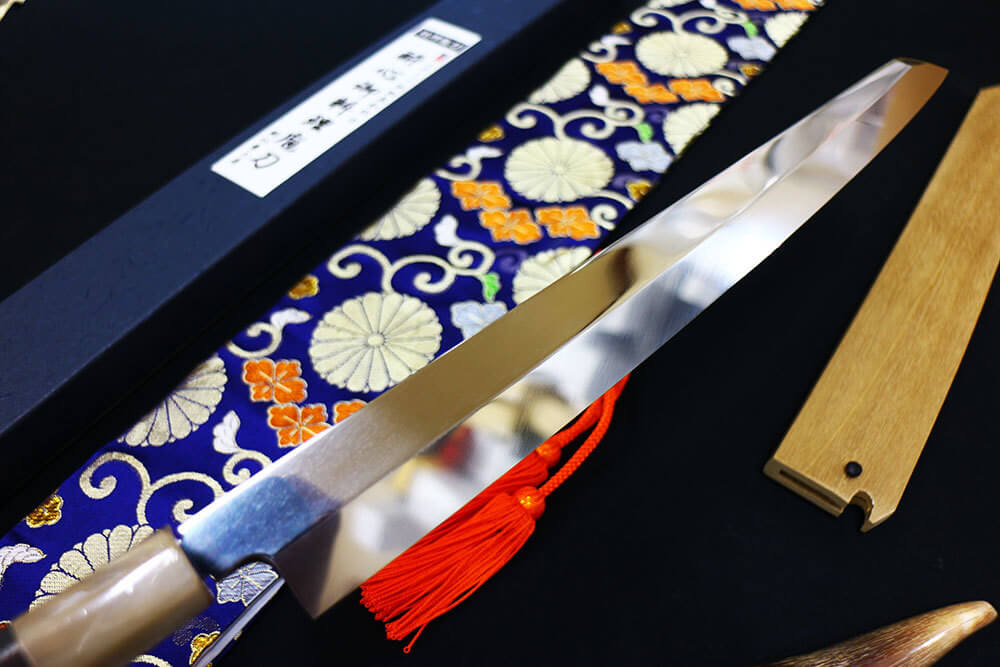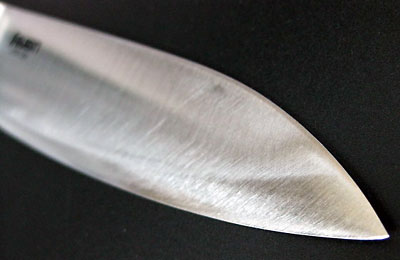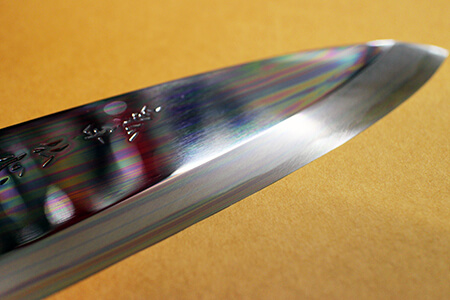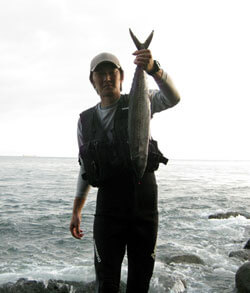Blue #2 steel Fuguhiki

I worked on re-sharpening the Blue #2 steel Fuguhiki. Although it wasn’t a Suisin Blue Steel Fuguhiki, the steel was well-crafted, resulting in an overall excellent knife. It had a slight bend, but that’s the fate of forged blades, so it’s unavoidable.
I fixed the chips, sharpened and repaired various parts, and finally, went through the Honbazuke process. The sharpening time really made me feel the reputation behind Blue #2 steel being considered for advanced users.
Saying it’s ‘difficult to put an edge’ might sound negative, but strictly speaking, it’s challenging to process a convex edge. Many have shared stories of mistakenly thinking the edge isn’t there yet due to inadequate processing of the convex edge and continuously sharpening. However, doing so results in the knife getting progressively thinner.
The difficulty in removing the convex edge implies the steel’s strong resilience. This resilience contributes to prolonged sharpness. How to effectively eliminate this convex edge becomes crucial (^^)b.
Using natural sharpening stones, Itohiki, and other methods are available. Well, once you start discussing it, the possibilities become quite extensive. The perception that Blue #2 steel is ‘hard to sharpen’ stems from its inherent hardness. It’s considered ‘challenging to sharpen’ due to its strong resilience, making it difficult to put an edge on.
Considering these factors, it appears that water Honyaki Blue #2 steel might truly be intended for advanced users.
hibishugyo
2008-01-18





